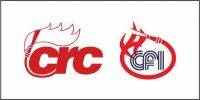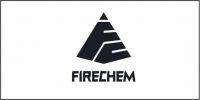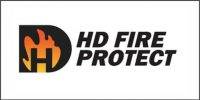 Firefighting is a hazardous profession that exposes individuals to various risks, including burn injuries. Personal Protective Equipment (PPE) plays a crucial role in mitigating these risks by providing firefighters with essential protection against heat, flames, and other hazards encountered in the line of duty. This empirical investigation delves into the relationship between firefighting PPE and burn injuries, aiming to identify factors influencing the effectiveness of PPE in preventing and reducing burn injuries among firefighters.
Firefighting is a hazardous profession that exposes individuals to various risks, including burn injuries. Personal Protective Equipment (PPE) plays a crucial role in mitigating these risks by providing firefighters with essential protection against heat, flames, and other hazards encountered in the line of duty. This empirical investigation delves into the relationship between firefighting PPE and burn injuries, aiming to identify factors influencing the effectiveness of PPE in preventing and reducing burn injuries among firefighters.
Background
Burn injuries represent a significant occupational hazard for firefighters, resulting from exposure to high temperatures, flames, hot surfaces, and hazardous materials during firefighting operations. While advancements in PPE technology have improved firefighter safety, burn injuries remain a prevalent concern, highlighting the need for comprehensive research to better understand the effectiveness of PPE in real-world firefighting scenarios.
Objective
The primary objective of this empirical investigation is to assess the relationship between firefighting PPE and burn injuries among firefighters. By analyzing incident reports, injury data, and PPE usage patterns, this study aims to identify factors contributing to burn injuries despite the use of protective gear. Insights gained from this investigation can inform the development of strategies to enhance PPE effectiveness and improve firefighter safety.
Methodology
This investigation employs a mixed-methods approach, combining quantitative analysis of injury data with qualitative examination of PPE performance in firefighting incidents. Key methodologies include:
- Data Collection: Gathering incident reports, injury records, and PPE specifications from firefighting agencies and organizations.
- Quantitative Analysis: Statistical analysis of burn injury data, including injury severity, anatomical location, and circumstances of occurrence, to identify trends and patterns.
- Qualitative Assessment: Examination of PPE design, fit, functionality, and compliance with industry standards through interviews with firefighters, PPE manufacturers, and safety experts.
- Comparative Evaluation: Contrasting incidents involving burn injuries with incidents where PPE effectively mitigated risks to identify factors influencing PPE performance.
Results
 Preliminary findings indicate a correlation between PPE effectiveness and burn injury outcomes among firefighters. Factors such as PPE condition, proper fit, compliance with usage protocols, and training adequacy emerge as critical determinants of burn injury prevention. Incident-specific variables, including fire intensity, duration of exposure, and environmental conditions, also influence the efficacy of PPE in protecting against burn injuries.
Preliminary findings indicate a correlation between PPE effectiveness and burn injury outcomes among firefighters. Factors such as PPE condition, proper fit, compliance with usage protocols, and training adequacy emerge as critical determinants of burn injury prevention. Incident-specific variables, including fire intensity, duration of exposure, and environmental conditions, also influence the efficacy of PPE in protecting against burn injuries.
Discussion
The empirical investigation underscores the multifaceted nature of burn injury prevention in firefighting, highlighting the interplay between PPE quality, user behavior, and situational factors. Addressing gaps in PPE performance requires a holistic approach encompassing equipment design improvements, training enhancements, and adherence to safety protocols. Collaboration between firefighting agencies, PPE manufacturers, and safety regulators is essential for implementing evidence-based interventions and advancing firefighter safety.
Conclusion
In conclusion, the empirical investigation sheds light on the complex relationship between firefighting PPE and burn injuries, emphasizing the need for ongoing research and collaboration to enhance firefighter safety. By identifying factors influencing PPE effectiveness and burn injury outcomes, this study provides valuable insights for optimizing PPE design, usage protocols, and training practices to mitigate risks and protect the well-being of firefighters in high-stress, high-risk environments.























































